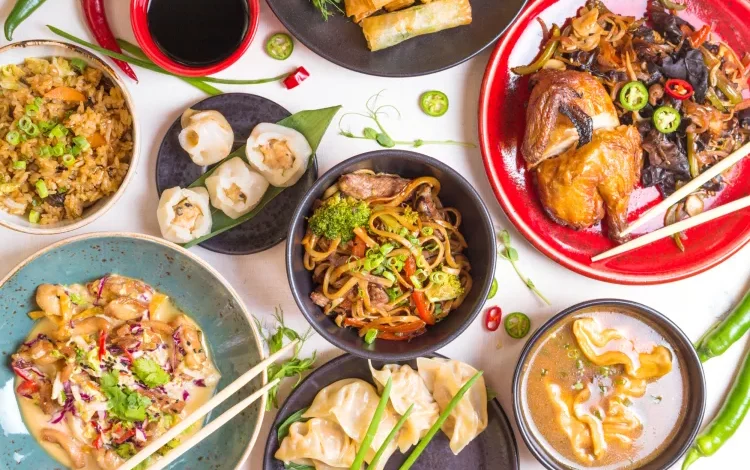best delicious Chinese dishes

China is rightly considered one of the civilizational cradles of humanity. It has given the world many scientific inventions and cultural treasures, and its historical and geopolitical influence simply cannot be overstated. But the real phenomenon of this country is its cuisine.
The famous scientist and archaeologist Kwan-Chi Chang said that the people of China attach great importance to food. And he was absolutely right. Food is truly at the center of every social interaction here. Family members, colleagues, business partners, and top-ranking politicians gather around the set table to eat and communicate.
A huge number of religious and everyday rituals in the Middle Kingdom are also associated with food. And in the end, it is Chinese cuisine that is one of the main “agents of influence” on the spread of the culture of the Middle Kingdom far beyond the borders of the country.
Philosophy of Chinese cuisine
The art of cooking in this country has been perfected over five thousand years. The greatest ancient philosopher and thinker Confucius said that food in China is one of the three main conditions for government, along with the army and the trust of the people.
It was he who, back in the 6th century BC, established culinary standards that exist in Chinese cuisine to this day, and determined many aspects of table etiquette. Taoism, which was spreading in the country during the same period, influenced the formation and development of the idea that properly prepared food could have medicinal value.

If we summarize the thousand-year philosophy of food culture in China into several theses, they will sound like this:
Food and its preparation techniques should correspond to the time of year. Selecting the highest quality ingredients is one of the key skills of a good cook. Each dish has its own history and rituals for its consumption, which an educated person should know in order to fully enjoy it.
Perfect cutting of ingredients is the basis of proper cooking.
The balance of five tastes – sour, sweet, bitter, spicy and salty – allows you to create harmony in the dish.
Huzhou – Controlling cooking temperature and time is the key to a cook’s success or failure.
The aesthetics of food presentation are as important as its taste.
The territory of China is vast, very diverse in its geographical characteristics and is located in four climatic zones – equatorial, tropical, subtropical and temperate. Therefore, in different parts of China, residents have access to unique local ingredients for cooking, and there are also special preferences in combinations of tastes and the choice of spices, culinary customs and traditions.
Among dozens of regional cuisines of the Celestial Empire, it is customary to single out 8 of the most influential and famous.
Cantonese is the most popular and widespread outside of China. The dishes prepared in Guangdong and Hong Kong are characterized by fresh, mild and natural flavors. A variety of sauces are actively used here to add sweet notes to the food.
Szechuan is incredibly popular in China itself. It is famous for its hot, spicy and rich dishes, which always contain a lot of chili, garlic, ginger and, of course, Sichuan pepper.
Fujian (Ming cuisine) – famous for dishes prepared from wild plants and mushrooms, as well as seafood. Its masters are recognized as virtuosos of cutting and creating textures, and the local menu includes many broths and soups.
Shandong (Lu cuisine) – common in the east and northeast of the country. Its tastes are umami (inherent in high-protein foods), salty and sweet and sour. Many wheat dishes are eaten here, as well as seafood and soups.
Jiangsu (Su cuisine) is very diverse. It is characterized by an exquisite and colorful presentation of dishes, the desire to preserve the original taste of the ingredients, as well as a large amount of fish and seafood on the menu.
Anhui is especially attractive because its recipes contain a lot of wild plants, and therefore fresh flavors. The most common cooking methods here are stewing, simmering and steaming. Fried food is served quite rarely.
Zhejiang (Zhe cuisine) – actively uses bamboo shoots, freshwater fish and seafood. Her menu includes many minimally processed dishes, delicate and light flavors and crunchy textures.

Hunan is the most spicy, hot and sour. The main seasoning here is chili pepper. Its cooks are not shy about the abundance of smoked meats, as well as pickled and canned vegetables.
Traditional Chinese dishes that have conquered the world
The variety of dishes in China is so great that it can shock an unprepared traveler. It’s hard to choose when each item on the menu sounds even more appetizing than the previous one. But traditional Chinese dishes, with a rich palette of flavors and ancient history, are known and loved by the whole world.
Peking duck bei jin hao (Beijing Kaoya)
Peking duck is the favorite Chinese food of all foreign tourists coming to the capital of the Middle Kingdom. In the Middle Ages, she was the star of imperial cuisine. The first restaurant specializing in this type of meat appeared in Beijing in 1416. And in the 1970s, Beijing Kaoya received the status of a national dish to welcome foreign guests.
It takes three days to prepare Peking duck, and eating it is a real ritual. The cook serves the bird whole to show off its perfectly cooked, crispy skin. Next, in the presence of guests, it is cut into 120 thin slices. They are eaten one at a time, placed on a translucent rice pancake, adding cucumber cut into long strips, shallots, sauce and rolling into a roll. Visitors can serve the remaining parts of the duck in broth with Chinese cabbage and soft tofu.





